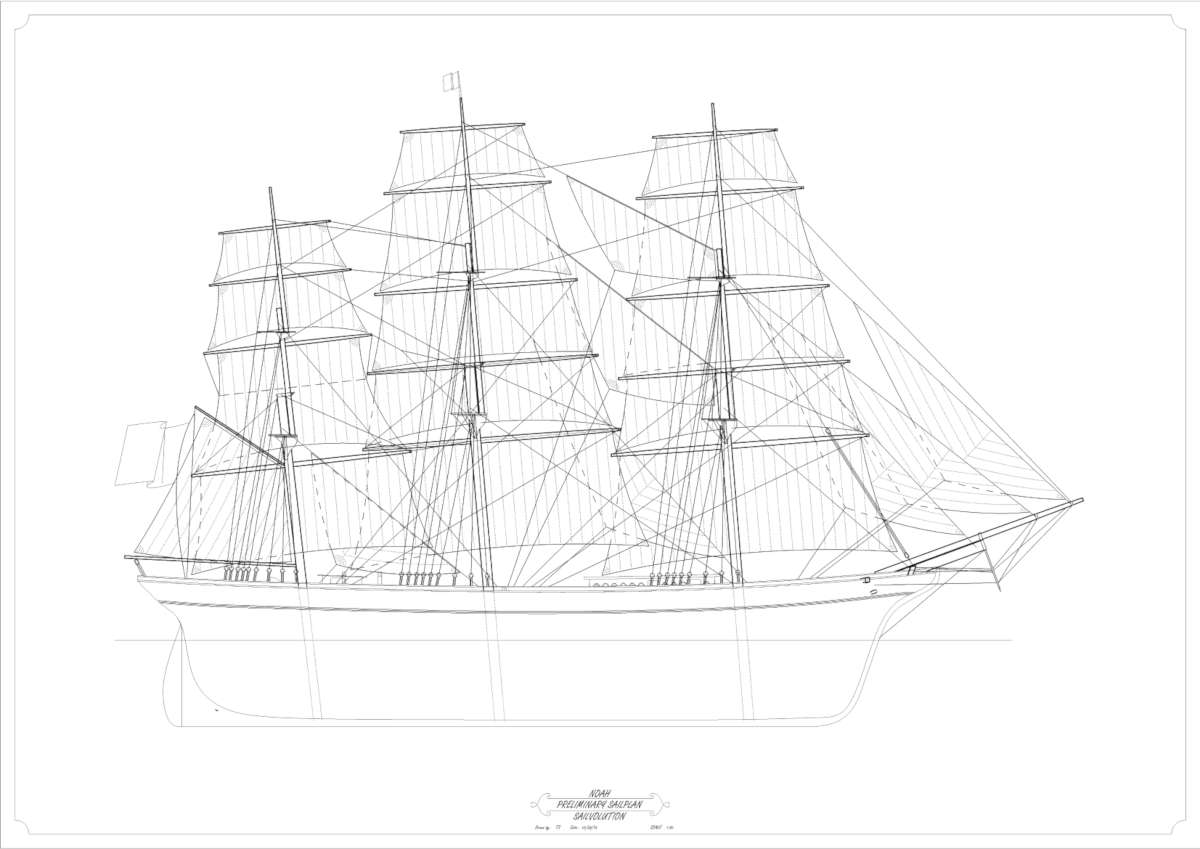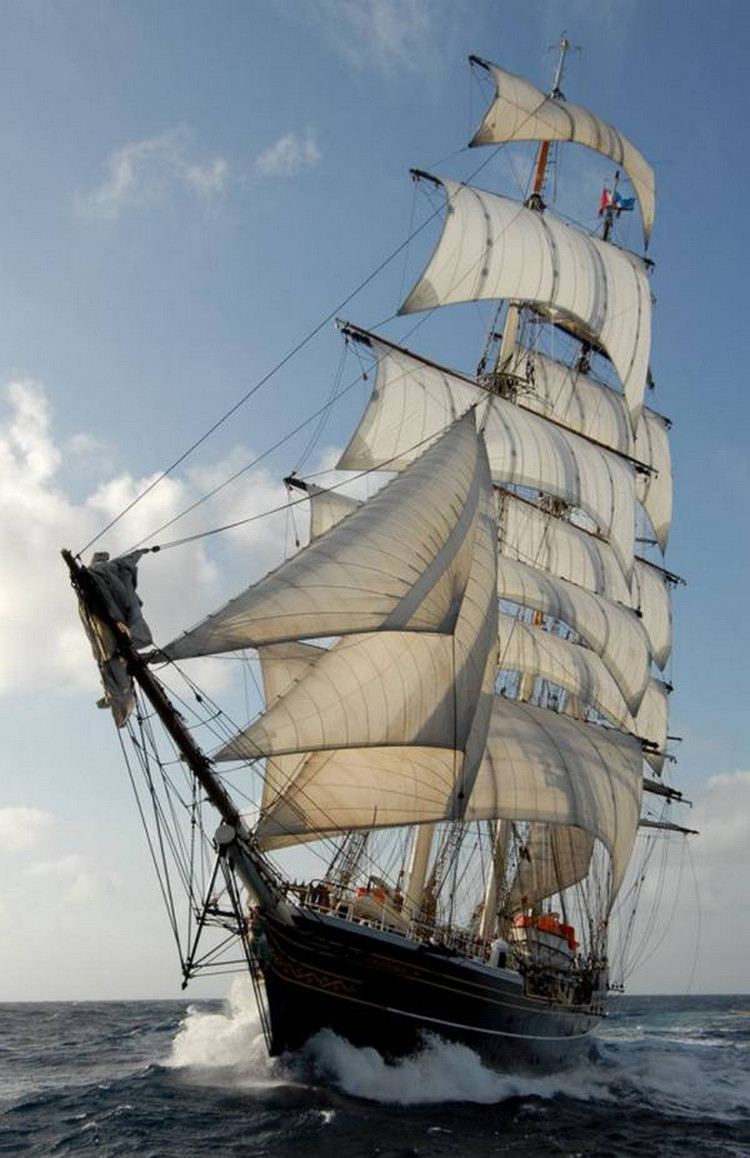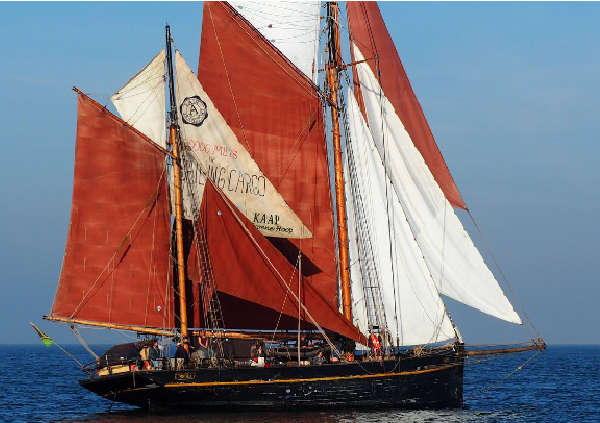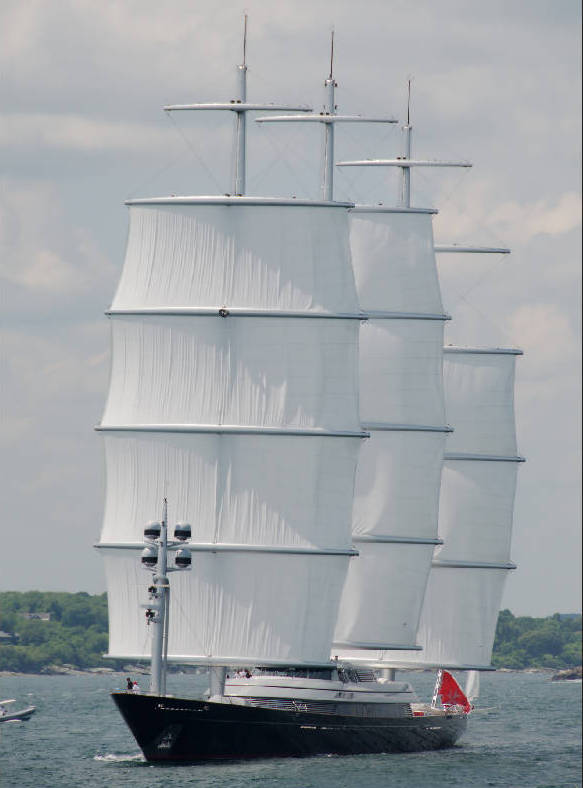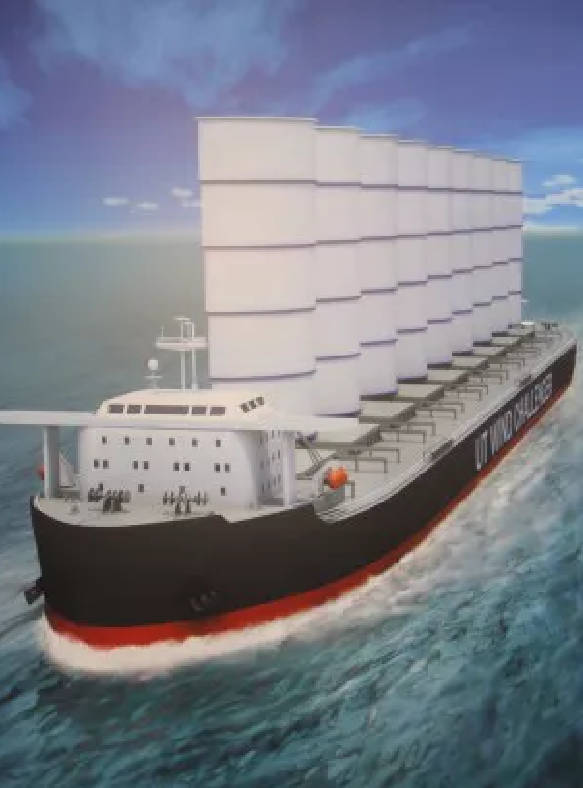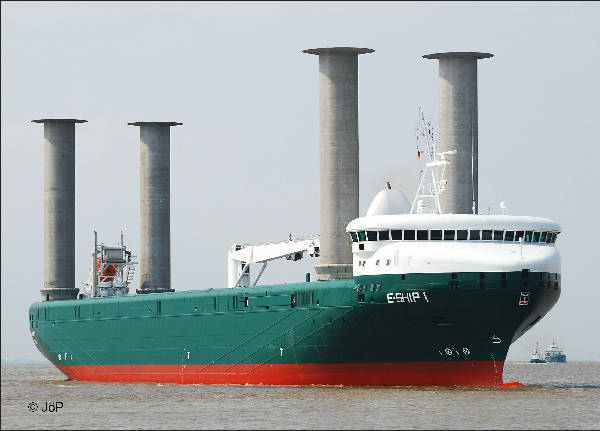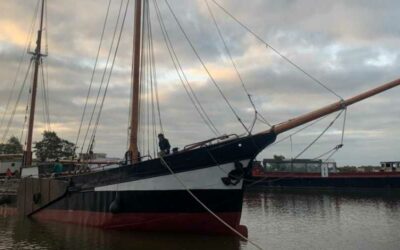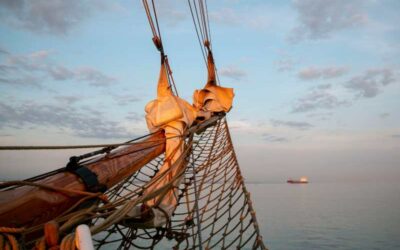1) Square rig
This is the oldest kind of rigging technique developed to perfection through more than 30 centuries of trial and error. It started all with one square sail and two spars: a mast and a yard. Through the said developments this technology went all the way to the five-mast full rigged ship. The German sailing vessel Preussen, was the largest, with a total of 5487 square meters of sail area.
Used in one and two mast ships as well the three-mast full rigged ship, has been the most popular throughout centuries of trade. Famous ships like Cutty Sark, Thermopylae and nowadays Stad Amsterdam and Sørlandet are of this kind. Also, the EcoClipper prototype will be rigged according to this system.
Given that there is an experienced crew of appropriate size on board. This kind of rigging beats any other rigging in: ease of keeping all sails under control, manoeuvrability and power of propulsion.
Clippership Stad Amsterdam – link
Sailing Cargo Ship NORDLYS
Image: (C) Fairtransport – link
2) Gaff Rig
This rig was developed along, but years later, than square rig. It is basically an innovation, for ease of handling, on the lateen rig. Which is a triangular sail on a yard. By taking off the part of the sail and yard, in front of the mast, and letting the remaining part of the yard, rest with a yaw to the mast, the gaff rig was created.
It can be used in ships of any size. Examples of ships with one mast, two masts, three masts… until the largest one, even rigged with seven masts are seen. It has the advantage that you need less people to handle it, than needed on a square rigger. Some say, it does point higher to the wind. This might be true in calm seas, however in heavy weather conditions, or high swell, for an inexperienced crew, the gaffs and booms might become very hard to handle.
In the age that square rig and gaff rig where used alongside each other, it was common knowledge that square rig was better for long voyages and all-weather circumstances, and gaff rig would need a smaller crew.
3) Bermudan Rig
Bermudan rig is again a simplification of gaff rig. Taking away the gaff and reducing the four cornered sail to a triangle. For the same sail area as a gaff rig the Bermudan rig needs a lot higher mast and rigging. Nowadays, with light composite materials this is less of a problem then in the times of heavier wooden masts.
The reason that it is currently dominating the sailing rigs is its simplicity. And true, it does work well, that is, especially for light displacement boats. A great rigging for yachts, but less practical and effective for heavy displacement cargo vessels.
Spirit of Bermuda
Image: (C) Sail-world – link
Maltese Falcon
Image: Boat Design – link
4) Dynarig
The dynarig was developed halfway the 20th century to make square rig even more efficient. It consists of a series of square sails on bend yards, thus coming closer to an airplane wing profile.
This rigging has been further developed by the Dutch naval engineers of Dykstra & Partners. They first rigged the mega-yacht Maltese Falcon with this rigging. Practically proving that it can be successful, and mechanically operated with a very small crew.
In cooperation with Fairtransport, Dykstra & Partners, also made the designs for an 8000 tons cargo ship with dynarig, the: Ecoliner. Although this concept looked very promising, it has not been further developed to the stage of an operational sail cargo vessel.
The reasons the Ecoliner has not been built yet, are that the start assumption was with trying to compete with regular cargo ships, on three different commercial advantages: price, speed and sustainability. With current economies of scale this proved to be not feasible. Another designer who is currently promoting the dynarig technique is the Windship Project.
5) Rigid Sails
The semi rigid sail has a rich tradition in efficiency in the Chinese Junk rigs. The more recent rigid sails where developed and tested in the 1980’s. They consist of rigid materials like sheets of metal or other composite materials. Usually they are trimmed to the wind with the help of mechanical and automatic devices powered by electricity or hydraulics.
Early 1980’s experiments, especially in Japan, where done with this kind of technology. The concept was developed around assisting the mechanically propelled vessel to safe fuel. This was successful in the sense that fuel savings of about 30% where reached on large bulk carriers and tankers. However, when energy prices collapsed again, these innovations where discontinued.
Currently there are several operators again, who are doing try outs, with this kind of rigging. To call a few: Oceanfoil, Ayro and Econowind.
Image: Cargill – link
6) Kite Sails
This is a system using a kite to save fuel on ships. Although possibly practical in the long run. Until now with years of testing, only fuel savings of averaging 5% and with a top performance of 15% could be measured.
Also, with this system there are a few different players working on further development. Two of them are the German based Skysails and the French company AirSeas.
7) Flettner Rotor
A Flettner rotor is a large vertical cylinder which by putting it in a turning motion will give a forward pulling power. This is called the Magnuss effect.
The first ship rigged with a Flettner rotor crossed the Atlantic in 1925. Only until rising oil prices, further interest, in this system, was showed. Several prototypes have been built, but results of the effects in saving fuel, are scarce and surrounded by secrecy.
Image: Jörn Prestien link
Interested to stay updated with in depth information about the sailing cargo industry?
Join our newsletter (below) , for questions or partnerships contact us now.

Thanks for signing on,
Following seas and royals all the way!
Captain Jorne Langelaan
